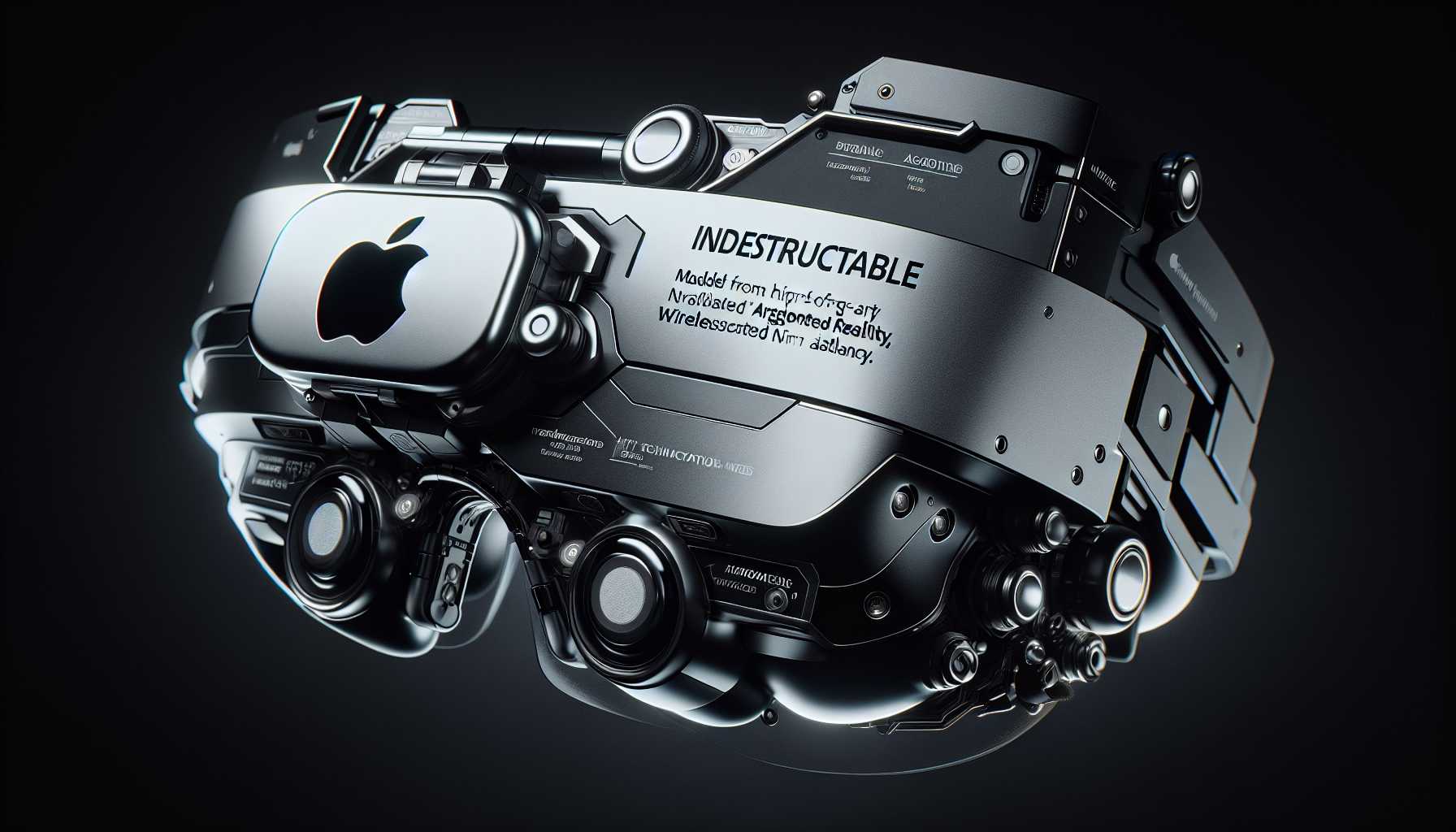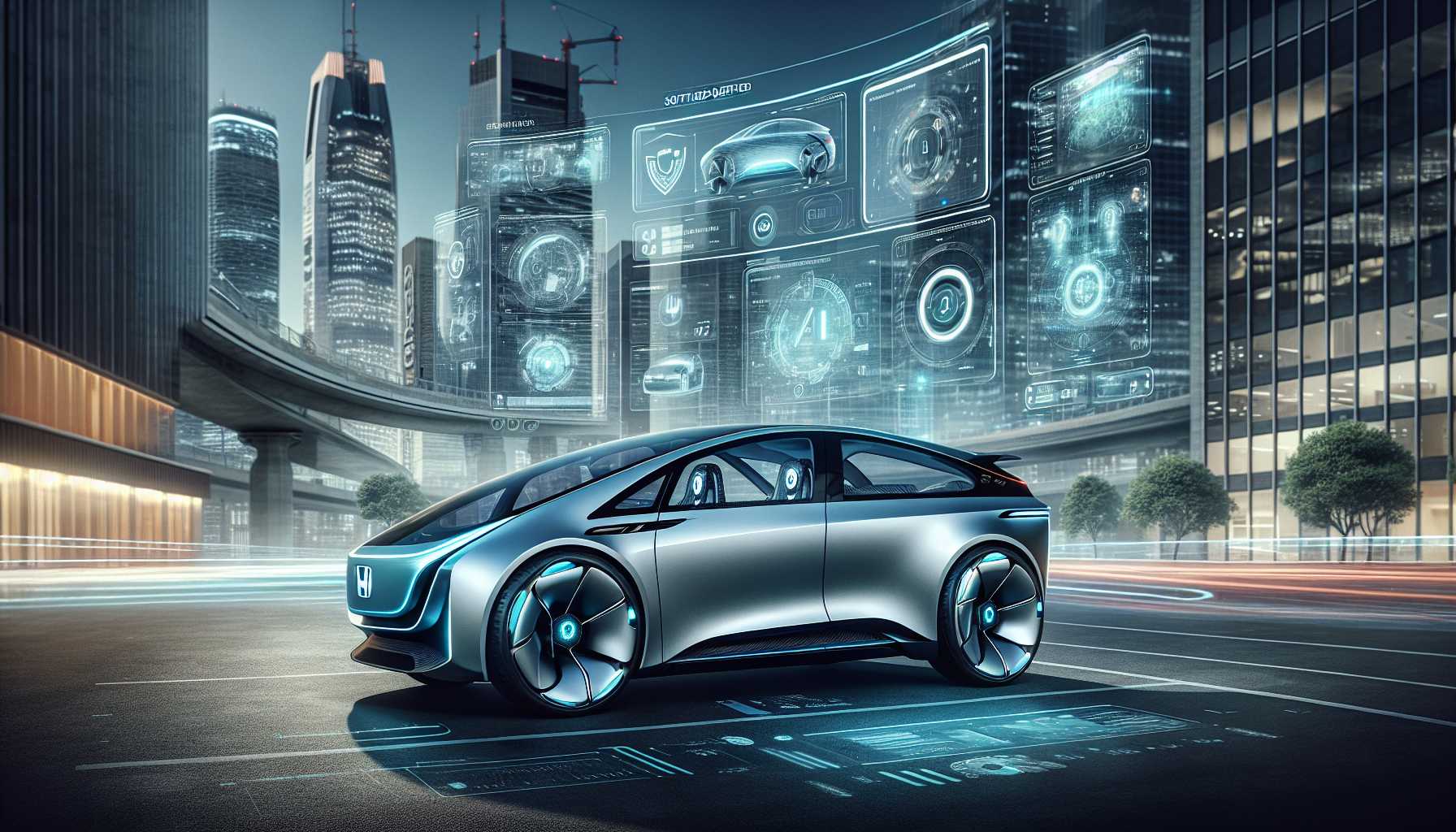”
The Invisible Giant: How Apple Dominated CES Without Showing Up
 In a world where high-tech showdowns unfold with dramatic flair, Apple, the Cupertino behemoth, skillfully played its cards by announcing its Vision Pro headset just before the CES 2024 keynotes. This move set the stage ablaze without so much as physically attending the expo. It’s a classic Apple strategy to float above the fray, letting its products speak volumes from afar. Apple’s Vision Pro is like a well-tailored suit in a sea of off-the-rack ensembles; it promises dual 4K displays for each eye, a social cues external display, and an array of cameras and sensors, all powered by the company’s M2 chip. The sleight-of-hand here is Apple’s timing – they launch ahead while others follow suit, quite literally bringing the ‘vision’ to virtual and augmented reality tech.
In a world where high-tech showdowns unfold with dramatic flair, Apple, the Cupertino behemoth, skillfully played its cards by announcing its Vision Pro headset just before the CES 2024 keynotes. This move set the stage ablaze without so much as physically attending the expo. It’s a classic Apple strategy to float above the fray, letting its products speak volumes from afar. Apple’s Vision Pro is like a well-tailored suit in a sea of off-the-rack ensembles; it promises dual 4K displays for each eye, a social cues external display, and an array of cameras and sensors, all powered by the company’s M2 chip. The sleight-of-hand here is Apple’s timing – they launch ahead while others follow suit, quite literally bringing the ‘vision’ to virtual and augmented reality tech.
Qualcomm Quietly Powers the XR Renaissance
 CES was abuzz with virtual reality frenzy, but Qualcomm deserves a hat tip for its Snapdragon XR2 Plus Gen 2 chipset. This silicon wunderkind serves as the lifeblood for Sony’s new device, pulling the strings behind the scenes for Samsung and Google’s rumored headsets. Qualcomm’s strategy is akin to playing chess; they power the pieces on the board, influencing the game from every angle. It’s not about making the most noise but about ensuring the sound of Qualcomm is heard across every major release. As a tech investor and observer, I see Qualcomm as a conduit, connecting and energizing partnerships and potential contenders in the VR/AR sphere. They’re stitching the fabric of XR technology with threads spun from their chipsets, positioning themselves in a web where everything somehow connects back to them.
CES was abuzz with virtual reality frenzy, but Qualcomm deserves a hat tip for its Snapdragon XR2 Plus Gen 2 chipset. This silicon wunderkind serves as the lifeblood for Sony’s new device, pulling the strings behind the scenes for Samsung and Google’s rumored headsets. Qualcomm’s strategy is akin to playing chess; they power the pieces on the board, influencing the game from every angle. It’s not about making the most noise but about ensuring the sound of Qualcomm is heard across every major release. As a tech investor and observer, I see Qualcomm as a conduit, connecting and energizing partnerships and potential contenders in the VR/AR sphere. They’re stitching the fabric of XR technology with threads spun from their chipsets, positioning themselves in a web where everything somehow connects back to them.
Tracking Tech: Autonomous Vehicles Forge Ahead
 CES has steered our gaze towards the mesmerizing road of autonomous vehicles, with spectacles like Ghostrider and pizza-delivering Priuses. We’re tantalized by the illusion that driverless cars will soon populate our driveways, but they linger just beyond reach. Yet, the true marvel is not the idea of omnipresent autonomous cars but the strides these vehicles have made off-road, particularly in industries less touched by the public eye, such as agriculture and mining. With a tech investor’s hat on, I’m excited by the off-road domain. These autonomous workhorses, like the Pronto trucks, don’t just navigate jungles and tundras – they redefine efficiency, safety, and profits. Autonomous vehicles in these sectors are not science fiction but financial fact, turning fantasy into fiscal reality.
CES has steered our gaze towards the mesmerizing road of autonomous vehicles, with spectacles like Ghostrider and pizza-delivering Priuses. We’re tantalized by the illusion that driverless cars will soon populate our driveways, but they linger just beyond reach. Yet, the true marvel is not the idea of omnipresent autonomous cars but the strides these vehicles have made off-road, particularly in industries less touched by the public eye, such as agriculture and mining. With a tech investor’s hat on, I’m excited by the off-road domain. These autonomous workhorses, like the Pronto trucks, don’t just navigate jungles and tundras – they redefine efficiency, safety, and profits. Autonomous vehicles in these sectors are not science fiction but financial fact, turning fantasy into fiscal reality.
Honda’s Electrified Ambitions and Software-Defined Vehicles
 Amongst the electric hum of the show, CES 2024 graced us with a tour de force of software-defined vehicles. Honda’s sleek EV visions and modular designs, alongside Google Maps integrating real-time battery information, have painted a picture of the future where vehicles evolve through software updates rather than mechanical overhauls. This approach is more than a mere paradigm shift; it is a herald of personal transportation’s metamorphosis. The era of the software-defined vehicle lifts the veil from the driver’s eyes, opening a window into a world where the car adapts and grows with its driver. It’s an eve of transformation, where Honda’s 0 series EVs and the subsequent traction they garner will be worth watching.
Amongst the electric hum of the show, CES 2024 graced us with a tour de force of software-defined vehicles. Honda’s sleek EV visions and modular designs, alongside Google Maps integrating real-time battery information, have painted a picture of the future where vehicles evolve through software updates rather than mechanical overhauls. This approach is more than a mere paradigm shift; it is a herald of personal transportation’s metamorphosis. The era of the software-defined vehicle lifts the veil from the driver’s eyes, opening a window into a world where the car adapts and grows with its driver. It’s an eve of transformation, where Honda’s 0 series EVs and the subsequent traction they garner will be worth watching.
A Symphony of AI: When Algorithms Write Novels and Drive Conversations
 CES has disclosed that AI’s intricacies have crescendoed into realms we reserved for the human mind. An AI-written sci-fi novel winning a national competition is a testament to the intricate ballet between human creativity and algorithmic precision. As a tech aficionado, I’m both impressed and wary. The ability of AI to craft narratives that convince human judges is profound, but it also voices a note of caution. The juxtaposition of AI’s capabilities against its implications on human industries, like literature, strikes a chord. It’s a pivotal moment where disciplines transcend their traditional confines, and the definition of creatorship is writ anew by silicon and code. In conclusion, CES 2024 has broadcasted a vibrant tableau of tech advancements that intricately weave the textured fabric of our tomorrows. From Apple’s assertive steps into AR/VR to Qualcomm’s chipset wizardry, from the quiet revolutions in autonomous vehicle technology to the philosophical musings of AI-generated literature, the tech mosaic presented is nothing short of invigorating. This is an era where defining the edges of possibilities becomes more challenging and, indisputably, more thrilling.
CES has disclosed that AI’s intricacies have crescendoed into realms we reserved for the human mind. An AI-written sci-fi novel winning a national competition is a testament to the intricate ballet between human creativity and algorithmic precision. As a tech aficionado, I’m both impressed and wary. The ability of AI to craft narratives that convince human judges is profound, but it also voices a note of caution. The juxtaposition of AI’s capabilities against its implications on human industries, like literature, strikes a chord. It’s a pivotal moment where disciplines transcend their traditional confines, and the definition of creatorship is writ anew by silicon and code. In conclusion, CES 2024 has broadcasted a vibrant tableau of tech advancements that intricately weave the textured fabric of our tomorrows. From Apple’s assertive steps into AR/VR to Qualcomm’s chipset wizardry, from the quiet revolutions in autonomous vehicle technology to the philosophical musings of AI-generated literature, the tech mosaic presented is nothing short of invigorating. This is an era where defining the edges of possibilities becomes more challenging and, indisputably, more thrilling.





